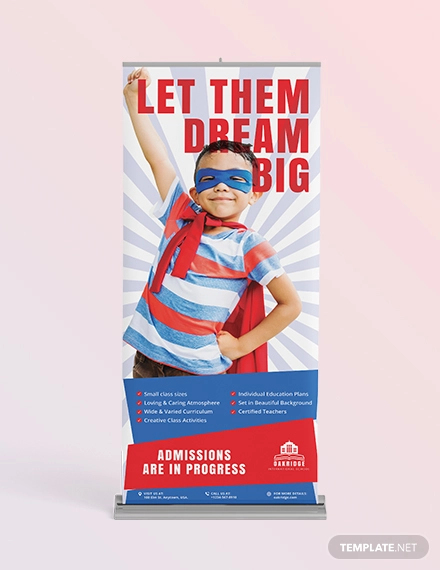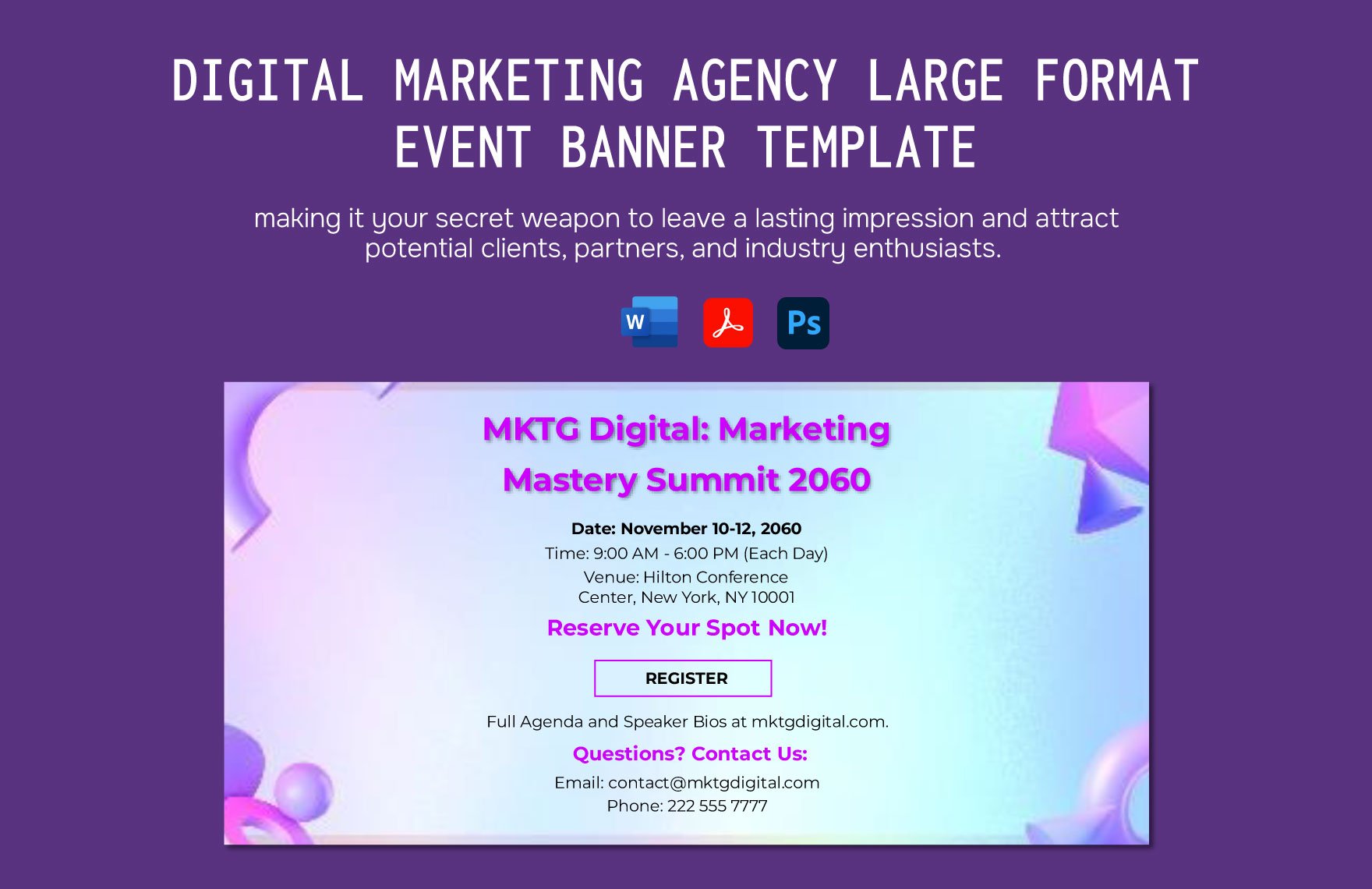In the vibrant world of academia, where institutions strive to capture attention and communicate their unique identity, a well-designed College Banner Template plays a pivotal role. These versatile graphic assets are far more than just decorative elements; they are powerful tools for branding, recruitment, event promotion, and fostering campus spirit. From celebrating sporting victories to inviting prospective students, a compelling banner instantly conveys a message and reinforces an institution's visual presence.

The challenge, however, lies in creating banners that are both impactful and consistent, especially when multiple departments or events require unique designs. This is where the strategic use of a college banner template becomes indispensable. By providing a pre-designed framework, templates streamline the design process, ensuring brand cohesion while allowing for crucial customization tailored to specific needs and audiences.

Whether your goal is to promote an upcoming open house, highlight a new academic program, or simply add a touch of school pride to your digital platforms, understanding the intricacies of effective banner design and leveraging the right templates can dramatically enhance your institution's communication efforts. This article will guide you through the process of crafting eye-catching designs that resonate with your target audience, from conceptualization to deployment.

The ability to quickly adapt and deploy visually appealing content is a cornerstone of modern marketing and communication. For colleges and universities, where information often needs to be disseminated rapidly and across various channels, a robust template system is not just a convenience, but a strategic necessity. Let's explore how to unlock the full potential of these essential design assets.

The Strategic Importance of College Banners

College banners serve multiple critical functions beyond mere aesthetics. They are dynamic visual communicators that actively engage various stakeholders, from prospective students and current faculty to alumni and the wider community. Understanding their strategic value is the first step in creating truly effective designs.

Building and Reinforcing Brand Identity
A strong brand identity is crucial for any educational institution. Banners, whether physical or digital, consistently display the college's logo, colors, typography, and overall visual style. This repetition helps to embed the institution's brand in the minds of the audience, fostering recognition and trust. Each college banner template should adhere strictly to brand guidelines to ensure uniformity across all visual touchpoints, from a campus welcome banner to a social media graphic.

Enhancing Recruitment Efforts
Prospective students are often swayed by first impressions. A visually appealing banner promoting an open house, a scholarship opportunity, or the unique aspects of campus life can significantly impact a student's decision-making process. Banners used in recruitment campaigns should be vibrant, informative, and aspirational, painting a picture of a welcoming and dynamic academic environment.

Promoting Events and Activities
From orientation week and graduation ceremonies to sports events, cultural festivals, and academic seminars, colleges host a plethora of activities. Banners are ideal for drawing attention to these events, providing key information like dates, times, and locations, and generating excitement. A well-placed banner can dramatically increase attendance and participation.

Fostering Community and School Spirit
Banners are powerful tools for celebrating achievements, rallying support for sports teams, and showcasing the diverse talents within the college community. They contribute to a sense of belonging and pride among students, faculty, and alumni. Imagine the impact of a large banner congratulating a championship-winning team or highlighting a student's research breakthrough—these visuals create lasting memories and reinforce community bonds.

The Anatomy of an Effective College Banner Template
Creating a truly effective college banner template involves more than just slapping a logo onto a background. It requires thoughtful consideration of several key design elements that work in harmony to convey a clear message and capture attention.

Visual Hierarchy and Layout
A good banner immediately guides the viewer's eye to the most important information. This is achieved through visual hierarchy, using size, color, and placement to emphasize key elements. Typically, the college logo and main headline are most prominent, followed by supporting text and a call to action. A clean, uncluttered layout ensures readability and prevents visual overload.

Branding Elements: Logo, Colors, and Typography
Consistency is paramount. Every banner must prominently feature the college's official logo, ensuring it is clear and legible. The chosen color palette should align with the institution's brand guidelines, evoking the desired mood and recognition. Similarly, specific brand fonts should be used to maintain typographic consistency across all communications. Deviation from these elements can dilute brand recognition and professionalism.

High-Quality Imagery and Graphics
Images and graphics are often the most captivating part of a banner. Use high-resolution photographs that are relevant to the message and evoke positive emotions. For instance, pictures of smiling students, state-of-the-art facilities, or dynamic campus scenes can be highly effective. Avoid pixelated or generic stock photos. If using illustrations or icons, ensure they are professionally designed and align with the college's aesthetic.

Compelling Messaging and Call to Action
The text on your banner should be concise, impactful, and easy to understand at a glance. Identify the core message you want to convey and articulate it clearly. Crucially, every promotional banner needs a clear call to action (CTA). This could be "Apply Now," "Register Today," "Visit Our Campus," or "Learn More." The CTA should be visually distinct and guide the audience on the next step.

Designing Your College Banner Template: Best Practices
Leveraging a college banner template effectively means more than just filling in blanks; it involves applying design best practices to ensure maximum impact and consistency.

Adhering to Brand Guidelines
This cannot be stressed enough. Before you even open your design software, familiarize yourself with your institution's brand guidelines. These documents dictate everything from logo usage and color codes (CMYK, RGB, Hex) to approved fonts and imagery styles. Strict adherence ensures that every banner reinforces your college's professional image and identity. Create template variations that already incorporate these guidelines, making it easier for users to stay on brand.

Considering Target Audience and Platform
Who are you trying to reach, and where will the banner be displayed? A banner for prospective high school students will likely have a different tone and visual style than one for alumni donors. Similarly, a digital banner for social media will have different size and file requirements than a large format print banner for a campus event. Design your college banner template with these variables in mind, perhaps offering different versions for different uses.

Simplicity and Readability
In a world saturated with visual information, simplicity cuts through the clutter. A good banner should be easily readable and understandable within a few seconds. Limit the amount of text, use clear fonts, and ensure there's sufficient contrast between text and background. Avoid overly complex layouts or too many competing visual elements. The message should be instantly digestible.

Scalability and Adaptability
A truly effective college banner template is one that can be easily adapted for various dimensions and purposes without losing its integrity. Design elements should be vector-based where possible to allow for scaling without pixelation. Consider how the template will look in a long horizontal format (for web headers), a square format (for social media posts), or a vertical format (for pop-up banners). This multi-purpose utility saves significant design time.

Accessibility Considerations
Design with accessibility in mind. Ensure sufficient color contrast for readability, provide alternative text descriptions for images on digital banners, and consider the font sizes for those with visual impairments. Inclusive design broadens your audience reach and demonstrates your institution's commitment to accessibility.

Choosing the Right Tools for Your College Banner Template
The market offers a wide array of design tools, each with its own strengths and weaknesses. Selecting the appropriate software for creating and customizing your college banner template is crucial for efficiency and quality.
User-Friendly Online Platforms (e.g., Canva, Adobe Express)
For departments or individuals with limited design experience, online tools like Canva or Adobe Express are excellent choices. They offer intuitive drag-and-drop interfaces, a vast library of stock photos, fonts, and graphic elements, and readily available templates that can be easily customized. These platforms are ideal for quick, on-brand designs for social media, basic web banners, and small print materials. Many even offer collaboration features.
Professional Design Software (e.g., Adobe Photoshop, Illustrator)
For advanced design capabilities, pixel-perfect control, and creating highly customized or print-ready banners, professional software like Adobe Photoshop (for raster graphics and photo manipulation) and Adobe Illustrator (for vector graphics and logos) are indispensable. These tools offer unparalleled flexibility for designers to create original college banner templates from scratch, ensuring precise brand representation and high-quality outputs for any medium. They are also essential for creating master templates that can then be adapted for simpler platforms.
Specialized Template Providers and Custom Design Services
Some institutions opt for specialized template providers or hire custom design services to create a comprehensive suite of branded templates. These services can develop a full range of banner templates tailored to the college's specific needs, ensuring all brand guidelines are met and providing ready-to-use assets for various departments. This is particularly useful for institutions with complex branding requirements or limited in-house design resources.
Optimizing Your College Banner Template for Different Platforms
Banners are deployed across a multitude of channels, each with its unique technical specifications and audience engagement patterns. Understanding these differences is key to optimizing your college banner template for maximum effectiveness.
Digital Banners: Web, Social Media, Email
Digital banners require careful consideration of file size, resolution, and interactivity.
- Web Banners: Often need to be optimized for fast loading times. Standard dimensions vary (e.g., leaderboards, skyscrapers, rectangles). Use JPG or PNG formats, and ensure responsiveness for different screen sizes.
- Social Media Banners: Each platform (Facebook, Instagram, Twitter, LinkedIn) has specific recommended image dimensions for profile banners, event covers, and post graphics. Leverage these to avoid cropping and ensure your message is fully visible. Use PNG for sharp text and logos, JPG for photos. Consider animated GIFs or short videos for added engagement.
- Email Banners: Keep file sizes very small to ensure quick loading for recipients. Ensure the design is simple and the call to action is clear, as emails are often viewed on mobile devices.
Print Banners: Outdoor, Indoor, Roll-Ups
Print banners demand high-resolution files, correct color modes, and attention to material.
- Outdoor Banners: These are exposed to elements, so durability is key. Materials like vinyl are common. Designs must be high-resolution (typically 150-300 DPI at print size) and use CMYK color mode for accurate color reproduction. Messaging needs to be highly visible from a distance.
- Indoor Banners: Often used for event backdrops, informational displays, or directional signage. Materials can range from fabric to rigid foam board. Resolution and color mode requirements are similar to outdoor banners, but the viewing distance might allow for more detail.
- Roll-Up Banners (Retractable Banners): Popular for events and presentations due to their portability. The college banner template for these should be designed with the specific dimensions of the stand in mind, ensuring no critical information is obscured by the roll-up mechanism.
Conclusion
Crafting eye-catching college banners is an art and a science, blending aesthetic appeal with strategic communication goals. By thoughtfully utilizing a college banner template, institutions can streamline their design processes, ensure brand consistency, and amplify their messaging across a myriad of platforms. From attracting new students to celebrating campus achievements, a well-designed banner is an indispensable asset in the competitive academic landscape.
Remember to prioritize clear visual hierarchy, adhere strictly to brand guidelines, and tailor your designs to both your target audience and the specific deployment platform. Whether you opt for user-friendly online tools or professional design software, the goal remains the same: to create impactful, memorable visuals that resonate and reinforce the unique identity of your college or university. Embrace the power of the template, and watch your institution's story unfold with vivid clarity and compelling design.
0 Response to "Craft Eye-Catching College Banner Template Designs"
Posting Komentar